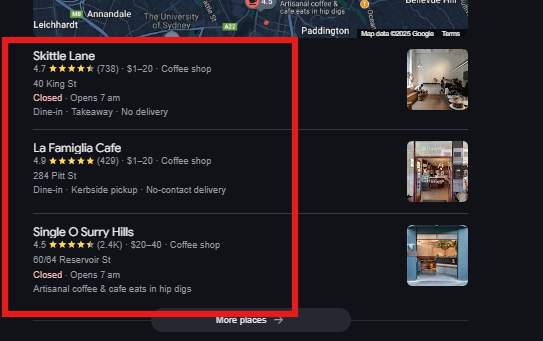How To Add Schema To Your eCommerce Store To Turbo-Boost Sales
Schema for eCommerce is something which many eCommerce store owners are still trying to figure out. Google loves it, searchers love it, but actually getting it to work can be a pain.
It’s not easy to implement product schema unless you know your way around code or you know a developer who’s an expert in the topic.
But if you can get it all figured out and have it all added to your website? Then, it could optimise your product pages for SEO greatly – and transform your profit margin.
In this blog, you'll learn about 10 different types of Schema Markup to add to your website.
Each of these schema types plays a critical role in improving the visibility and performance of your eCommerce website in search engines. We'll walk you through the following:- Product Schema
- Offer Schema
- AggregateRating Schema
- Review Schema
- BreadcrumbList Schema
- FAQ Schema
- LocalBusiness Schema
- Video Schema
- Sitelinks Search Box Schema
- Organisation Schema
Why Is Schema Essential For An eCommerce Store?
There are estimated to be as many as 28 million eCommerce stores today. That means that you need to have scroll-stopping, highly-optimised shop listings for customers to find you.
That’s why you need product schema. But what exactly is it?
It’s this -
Looking at the above screenshot, schema provides the searcher with:
- The price (and if it is discounted)
- The star rating of the item (and how many ratings the product has)
- Delivery rates (emphasising free delivery is a big selling point)
- The name of your store (and a link to it)
There are thousands of types of schema but just these four on their own give the customer the most important pieces of buying information that they need.
This is why implementing schema markup for eCommerce is so important. You’re providing visual persuasion to get a paying customer to come through your online door.
10 Schema Types To Add To Your Website
So, what schema should you be adding to your eCommerce store? Let’s look at the essential ten for an online store owner to remember.
1. Product Schema
Let’s start with what’s arguably the most important schema of all for eCommerce stores – the product.
We looked at a Google listing at the start of the article, which showed information about the product – the price, the image, the brand, and so on.
This is the schema you should put in the heading of each product page to get this feature. By doing so, you’re turning your product page into an interactive, informative search listing.
2. Offer Schema
itemCondition can also be changed to:
- DamagedCondition
- RefurbishedCondition
- UsedCondition
3. AggregateRating Schema

This provides the average rating of the product, so the required number of yellow stars shows on the Google product listing.
Put the review count to the number of reviews you have on the product page. Put the rating value to the average rating.
This won’t change by itself, so if you suddenly get a lot more positive reviews – or a lot more negative ones – you need to go into the schema and change it.
4. Review Schema
If you get a great product review, then you should get it out front and centre on your Google listing. This will make someone pause to read it, and hopefully click through.
The categories are self-explanatory. Add the person’s name, the product being talked about, the rating, and the actual review.
But keep the review short. Real estate on Google is restricted. Use only the best parts and leave out the fluff.
5. BreadcrumbList Schema
Google search bots are pretty smart, but they still need help from time to time. A little nudge in the right direction will make sure that the crawlers find all of the pages, and understand your site structure.
This will help them properly figure out your search engine ranking for eCommerce.
You can make this happen with BreadcrumbList schema. If you look at the example below, you’ll see that the first category leads to the second category (/shoes), which leads to the next category (/shoes/running).
You shouldn’t have too many sub-categories though. As well as making it more difficult for Google to find its way, you’d also be making it time consuming for the customer to click each category.
6. FAQ Schema
One of the golden tickets of Google search dominance is the People Also Ask section. If you can snag one of those plum spots, then you’ll be laughing all the way to the bank.
Get your most frequently asked questions together and add the FAQ schema snippet.
Competition for the PAA spots are fiercely fought over, but adding a FAQ schema code improves your chances of getting in there.
7. LocalBusiness Schema

Local SEO is a specialised form of SEO all by itself. But it’s worth doing the basics, at least.
An increasing number of people want to support local businesses, so you need to make your business more findable.
You can do that with the LocalBusinessSchema. This adds the name, address, phone number, and opening hours to the listings when someone searches for your business.
This information will also be added to your location on Google Maps, for extra visibility.
8. Video Schema
Videos should be used sparingly on your site. They’re generally big and slow to download, which slows your site down. You should instead use YouTube embeds.
However, if you want to put a short small video on a page, use this schema to get it indexed. Remember to add the video thumbnail picture. This also helps with video SEO.
9. Sitelinks Search Box Schema
If you look at the search listings for really big companies, you’ll find search boxes on the search pages (very meta). This lets the customer search your site directly from Google.
By adding the Sitelinks Search Box Schema, you can hopefully get a sitelinks search box yourself. Google doesn’t give them to everybody, though. But it’s still worth a try.
10. Organisation Schema
Organisation Schema makes sure that your business brand is properly listed on Google, along with your social media pages and other important online locations.
It provides a roadmap for Google to connect the dots between your various pages, and not get you confused with people or businesses with the same name. This definitely helps your eCommerce SEO strategy a lot, so we recommend doing this.
Validate Your Schema
With each of the above samples of code, you simply need to swap out that code for your own.
But it can still be very easy to make an error.
That’s why, before it’s entered on your site, as part of your strategy for SEO optimisation for online stores, you should validate the code and make sure you have formatted everything correctly.
Just copy and paste your code into Schema Markup Validator, and it will tell you if there are any errors and how to correct them.
Final Word
As we said at the beginning, this looks like advanced SEO for eCommerce, and to a certain extent, it is.
The code itself is not hard, but placing it in the right place on your website may be a bit more difficult.
That’s why if you are not skilled in technical SEO for eCommerce, then asking a professional to do it may be best.
If you’re an online store, improving your online visibility is going to come down to things like schema.
You only have seconds to catch someone’s attention as they scroll through Google. Give them something to stop for.
